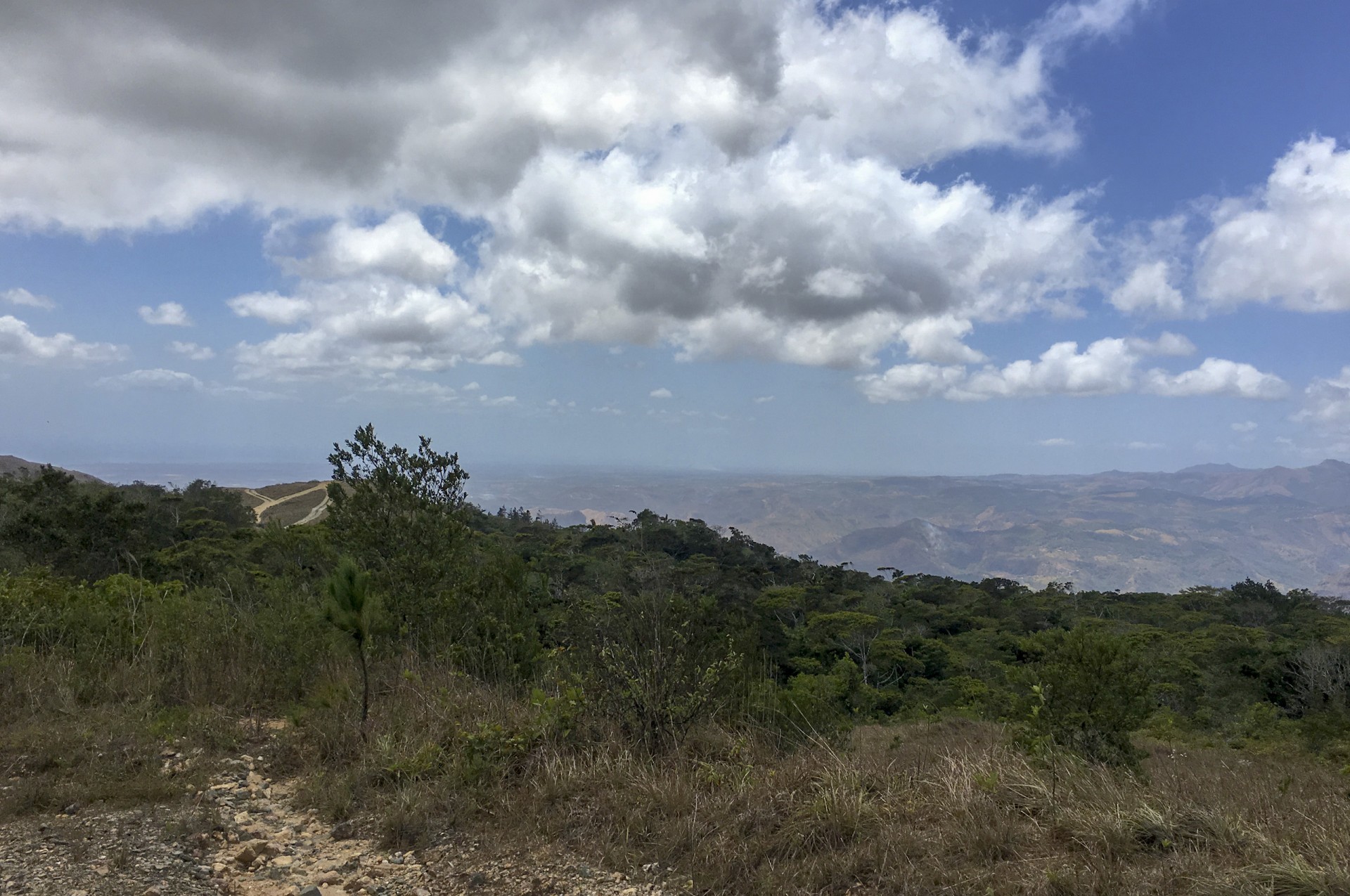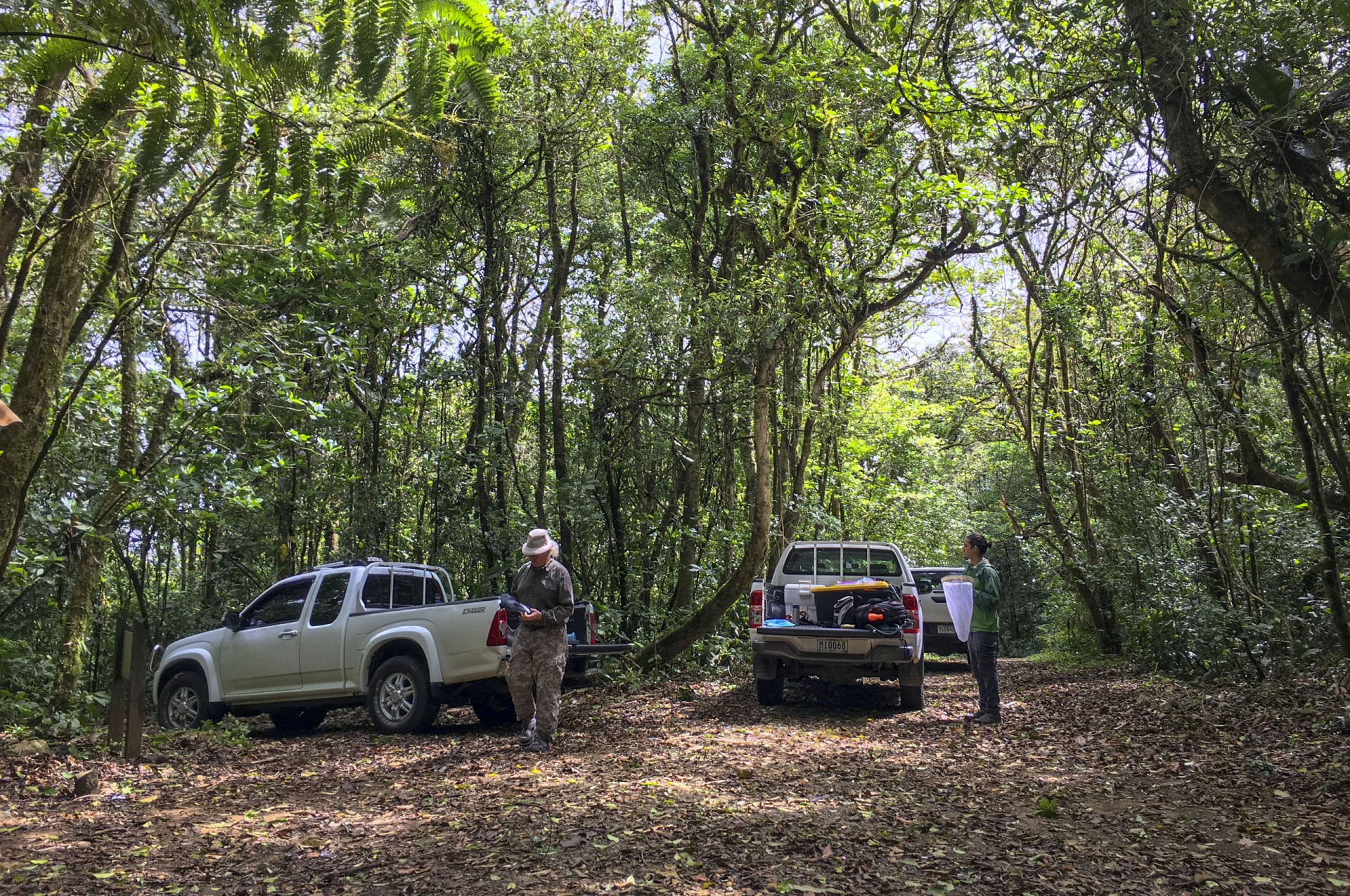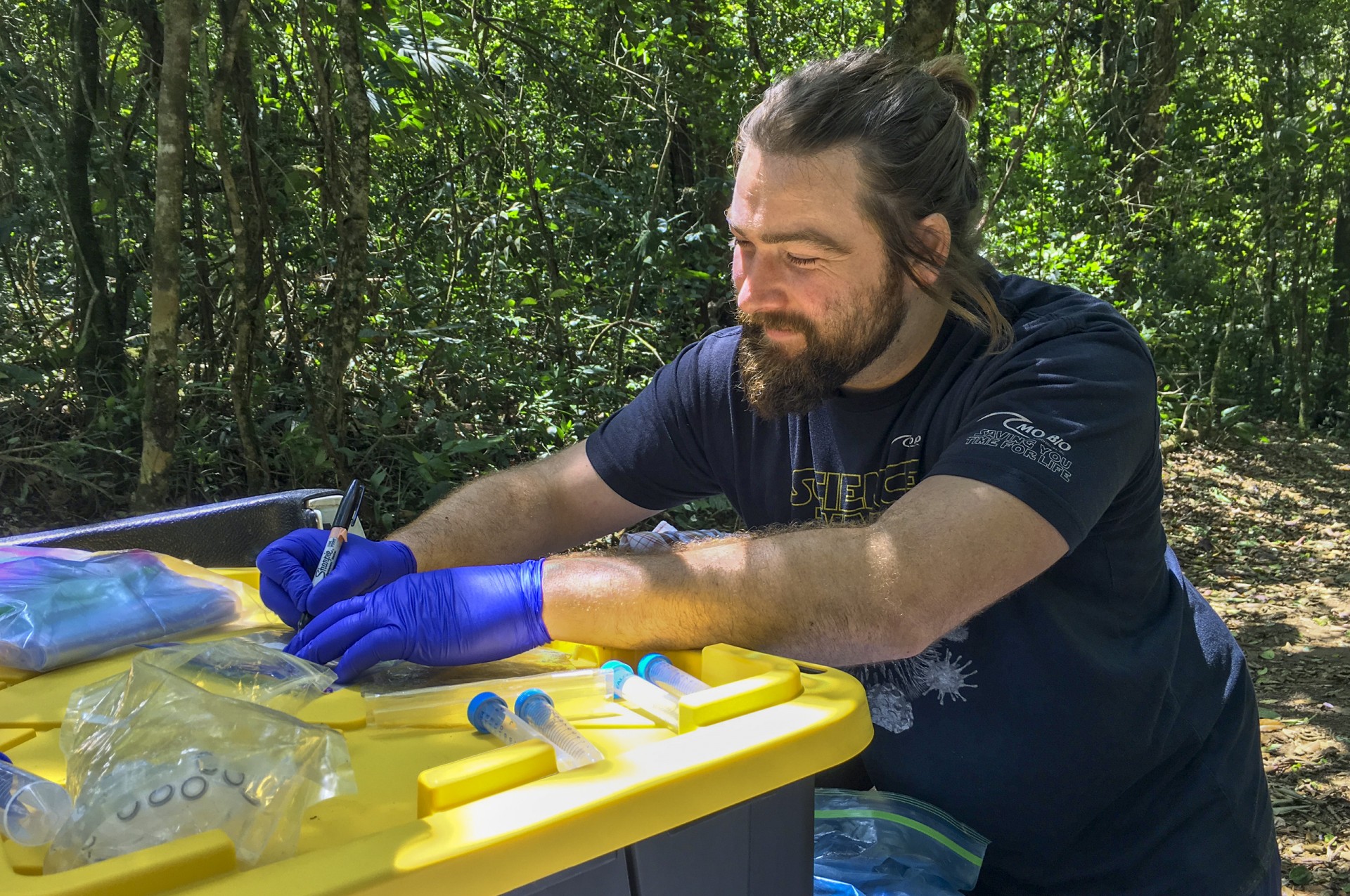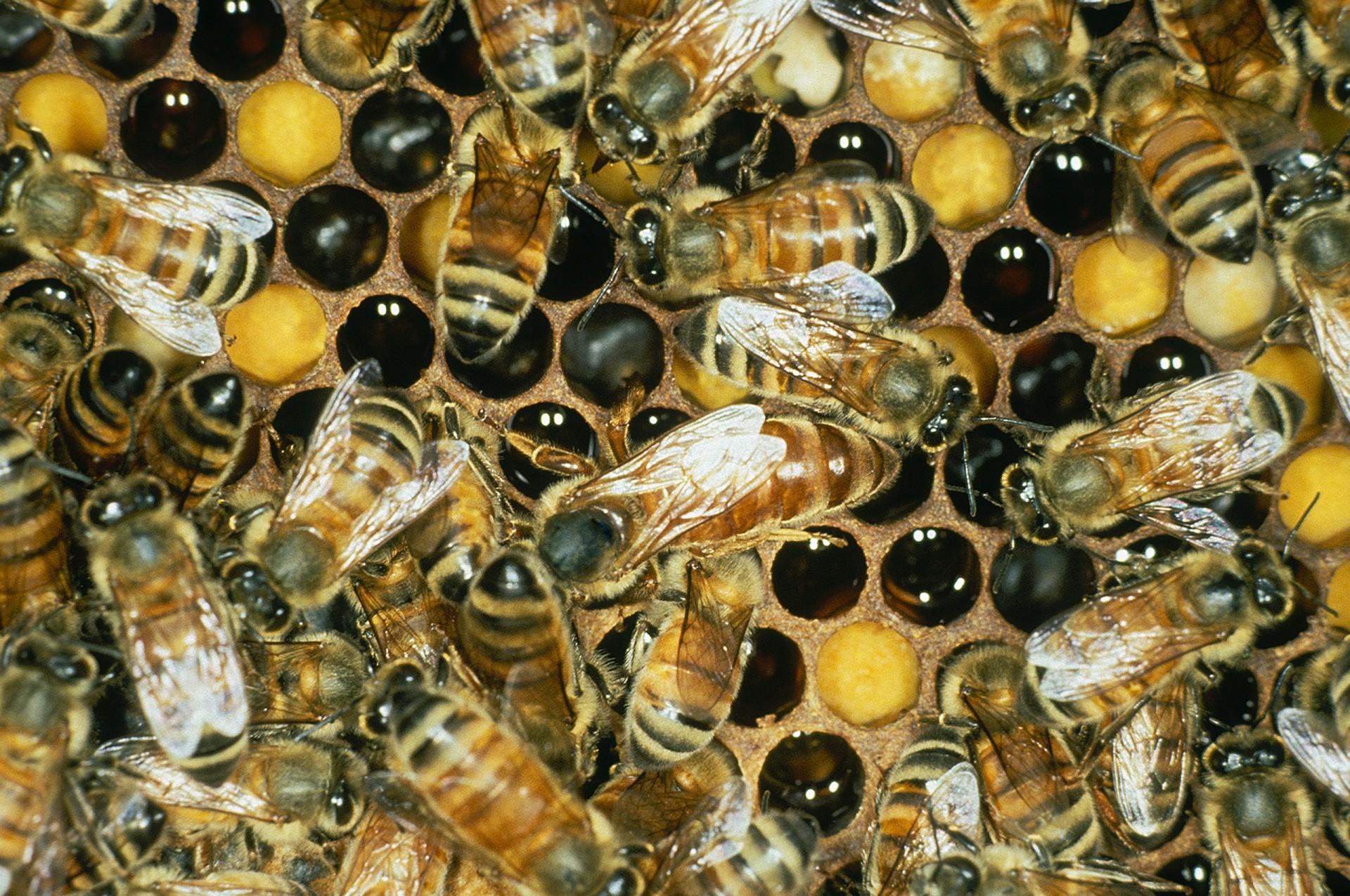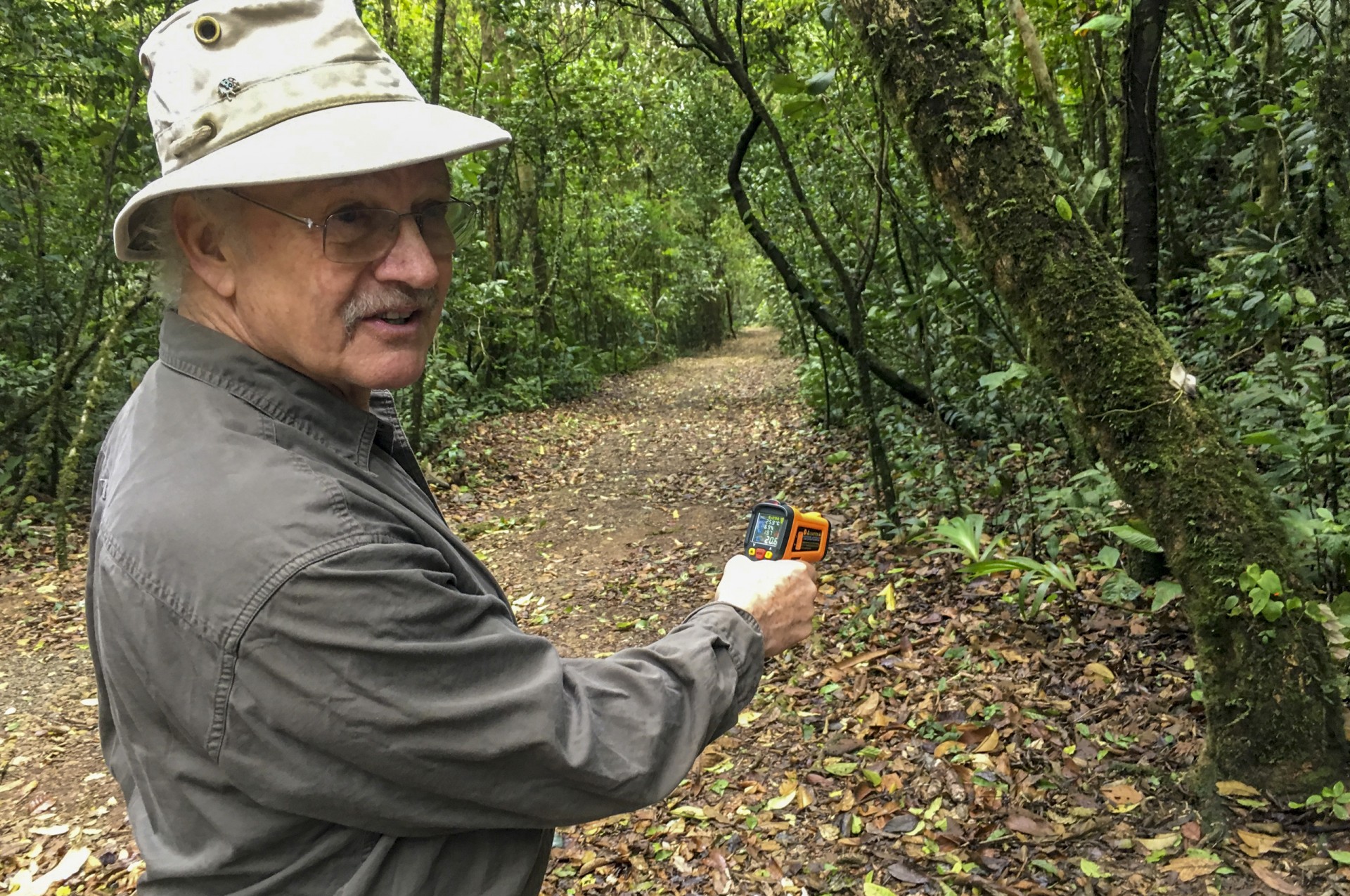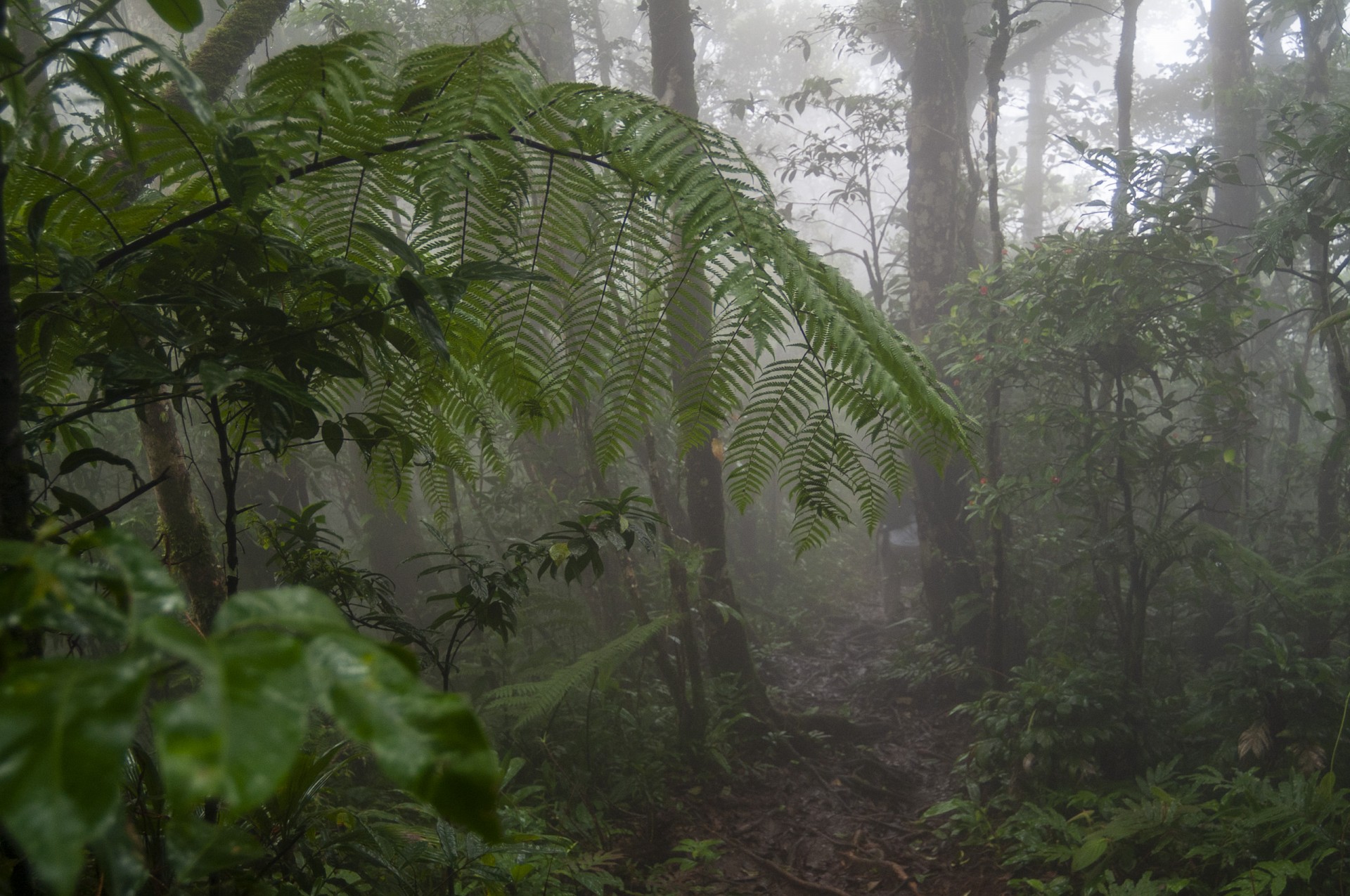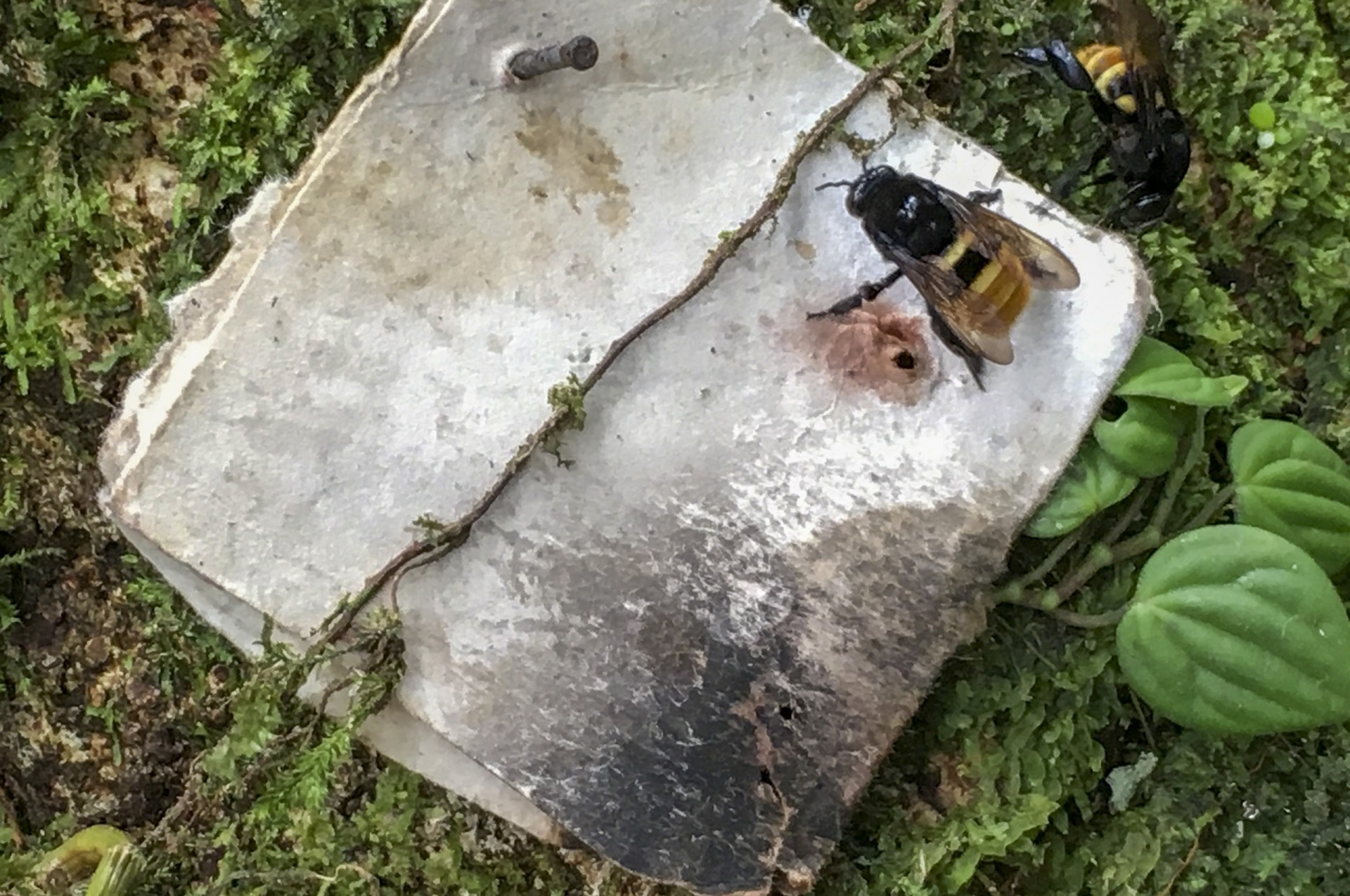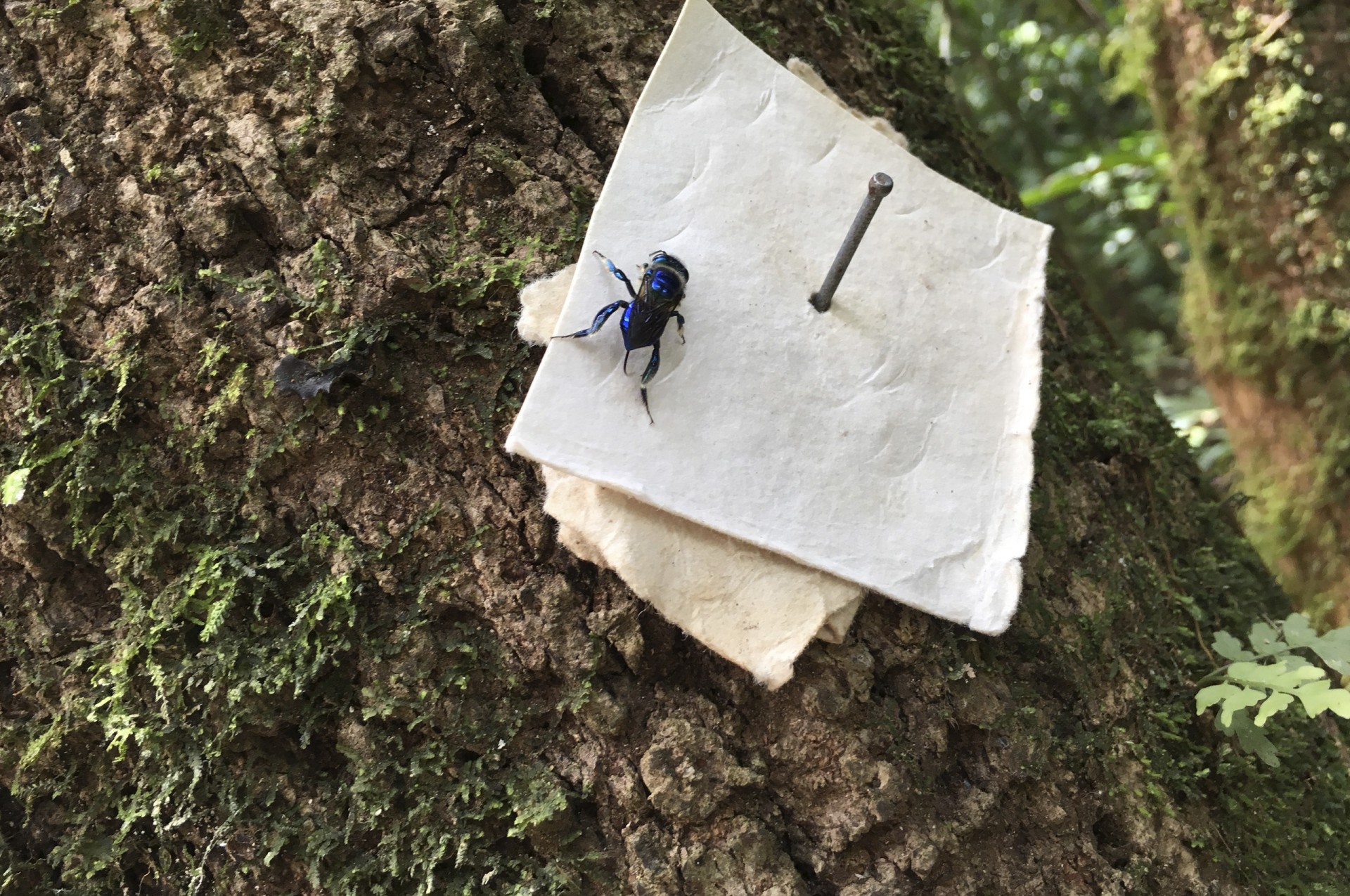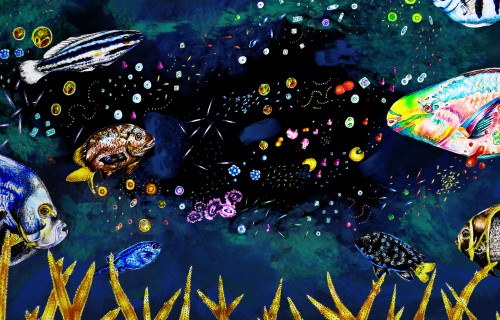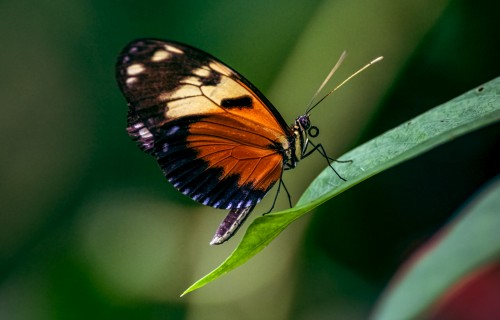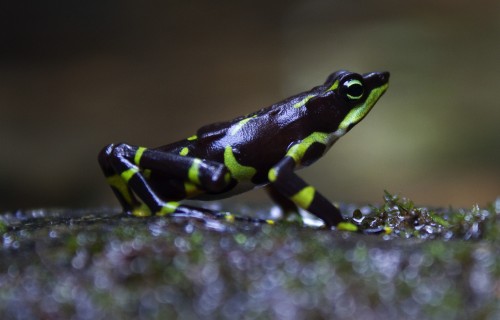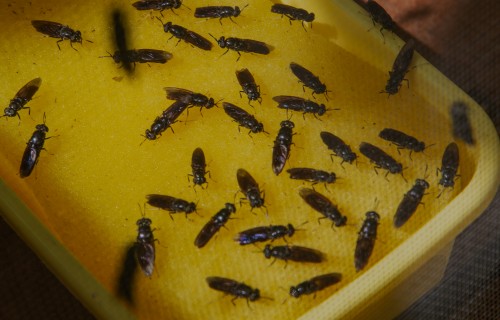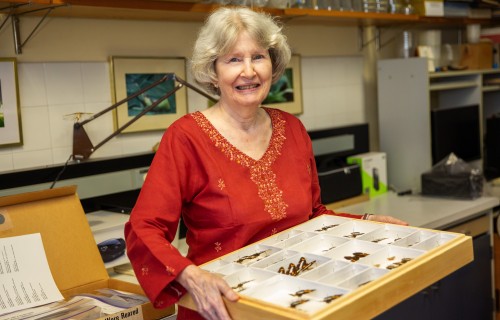Smithsonian science helps understand blue whale migratory and foraging patterns to inform conservation strategies
Cloud
habitat
Mysterious cloud forest bees
and their microbes - Part I
Altos de Campana National Park
Three adventure-seekers meet in the clouds, each with their own reasons to learn more about mysterious jewel-like bees.
On an early morning in mid-March, the team from STRI’s communication office who drove up from Panama’s sweltering lowlands to interview three scientists working near the top of Cerro Campana find themselves ill-prepared for the chilly, mist-laden breeze blasting through the trees.
Only 2.5 percent of tropical forests are classified as cloud forests. At high altitude and perpetually bathed in moisture, wind-stunted trees bear sparkling cloaks of moss, orchids and air-plants. Crystal clear water drips off leaves into streams descending into valleys below. Declared Panama’s first national park in 1966, this island in the clouds is where the principal rivers that flow eastward into the Panama Canal are born.
David Roubik, staff scientist at STRI (aka the Beeman); Jordan Kueneman, Tupper post-doctoral fellow; and Ernesto Bonadies, hired by STRI deputy director Bill Wcislo on a grant from the Simons Foundation to help search for tropical microbes, share a common purpose: to identify orchid bees.
This is Roubik’s 40th year of monitoring orchid bees in Campana, since the Smithsonian first brought him to Panama in 1979.
As he nears retirement, Roubik is justifiably one of the world’s experts on tropical bees and their role as pollinators.
He arrived in the park shortly after dawn to set out three pieces of blotter paper, each slightly smaller than a playing card. One is impregnated with oil of wintergreen, one with skatole (its name from the Greek for “feces”). The third was doused with cineole—the original orchid bee bait, discovered when orchid bees at a biological research station in the Amazon seemed particularly interested in a visitor’s perfume.
As bees fly in, Roubik easily identifies them. He checks each card every 15 minutes for four hours, listing the bees and identifying the tiny packets of pollen called pollinaria on their backs that they carry from one orchid and deliver to the next.
“Here at Cerro Campana we’re in a beautiful cloud forest setting on the Pacific side of the Isthmus,” he said. “I’ll bet you there are about 300 species of bees here in total. Of those, maybe 50 species or so are orchid bees.”
On a crash course to learn as much about orchid bees as they can, Jordan and Ernesto want to learn how Roubik identifies orchid bees on sight and in flight. They’ve been netting bees in Campana every other month since last October and now have a robust collection of individually collected bees.
Their ultimate purpose is to characterize millions of microbes in and on the bees’ bodies. These days biologists picture every large organism as a mosaic of all of the smaller organisms that interact with it, both inside and outside of the bee’s bodies.
As each bee comes in to harvest the chemical scents on the cards, Roubik talks about how he tells the bees apart. In his head, he has a catalog based on 40 years of experience of the bees found at this site, and to that he adds the field marks that distinguish one bee from another.
“Why are they so attractive, with such iridescent colors” Jordan wonders out loud,“if the females are responding to the smells, of the chemicals they collect and not to their color?” Correct says Dave, “the iridescent colors are not to attract mates. The iridescent colors are mirrors, reflecting the colors all around them, offering some camouflage.”
Jordan and Ernesto collect Eulaema nigrita and many other species putting them into individual tubes containing 100 percent ethanol. When they were here in January it was sunny and calm and they collected 50 bees: 6 individuals from about 10 species, but today is much slower.
The low counts today may just be due to the strong wind and cool temperatures, but Roubik is concerned about cloud forest orchid bees. Without these bees, orchids would not be able to reproduce. They also pollinate tree tomatoes and other plants in the tomato family, plants in the bean family and plants of economic importance like coffee. Often a single bee species may be the only pollinator of a certain orchid species. For example, Eufriesea concava is the only pollinator of Panama’s national flower, the Espiritu Santo orchid. Each bee probably only lives for a couple of months, so a couple of days of bad weather may mean a lot of plants that don’t get pollinated.
As the world warms—and warm air rises—cloud forests and their unique inhabitants gradually disappear, forced higher up mountain slopes until they have nowhere else to go. Dave points his laser thermometer at the tree with the cineole oil bait.
“These bees have very tight temperature limits and they die outside that range. We think that bees from lower elevations may be moving up because it’s getting too warm for them in the lowlands.” There is so much left to know. Only by checking in every couple of months, will biologists know if bee populations are declining. We all wonder, who will be doing the necessary survey work 40 years from now?

